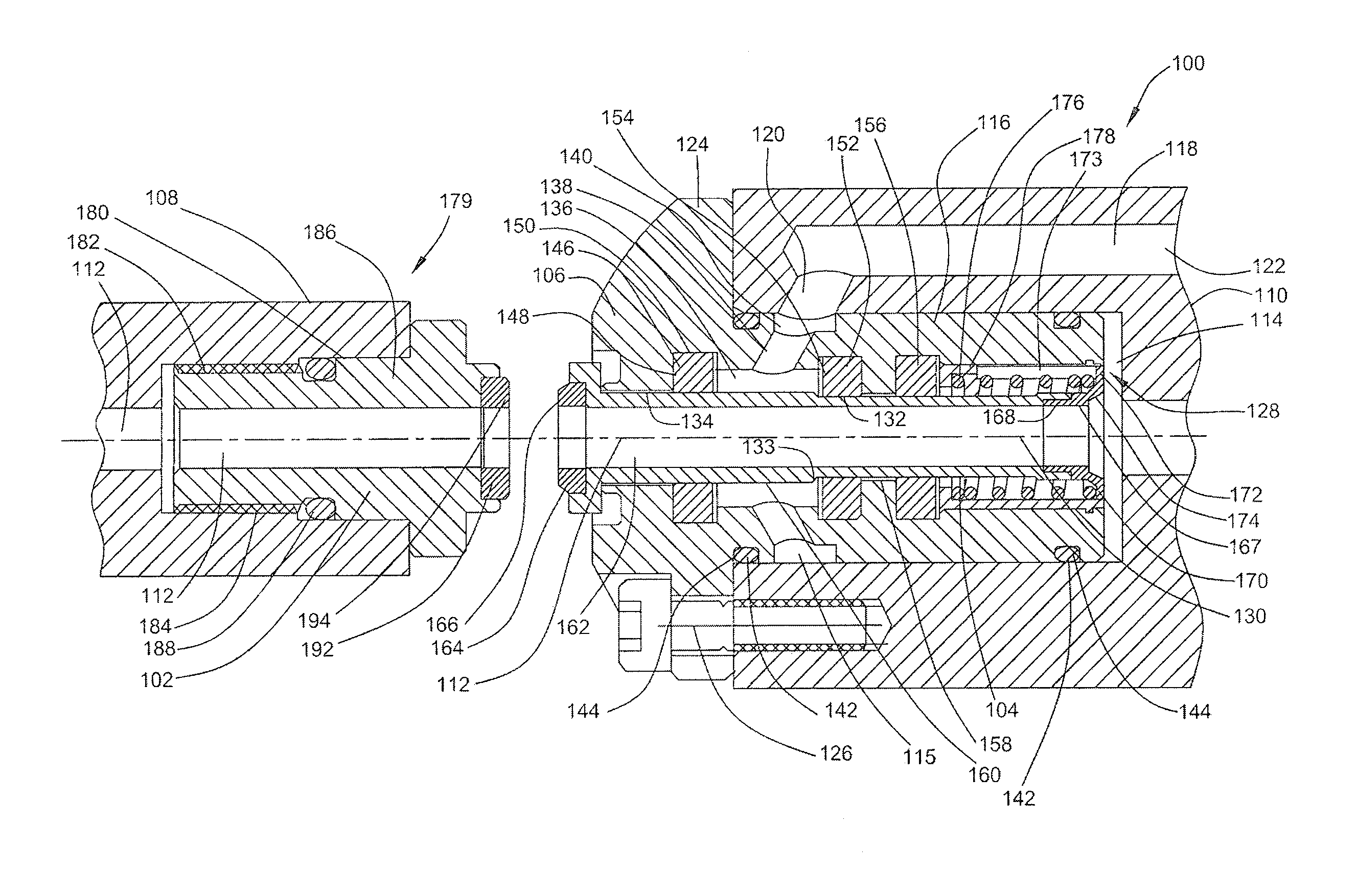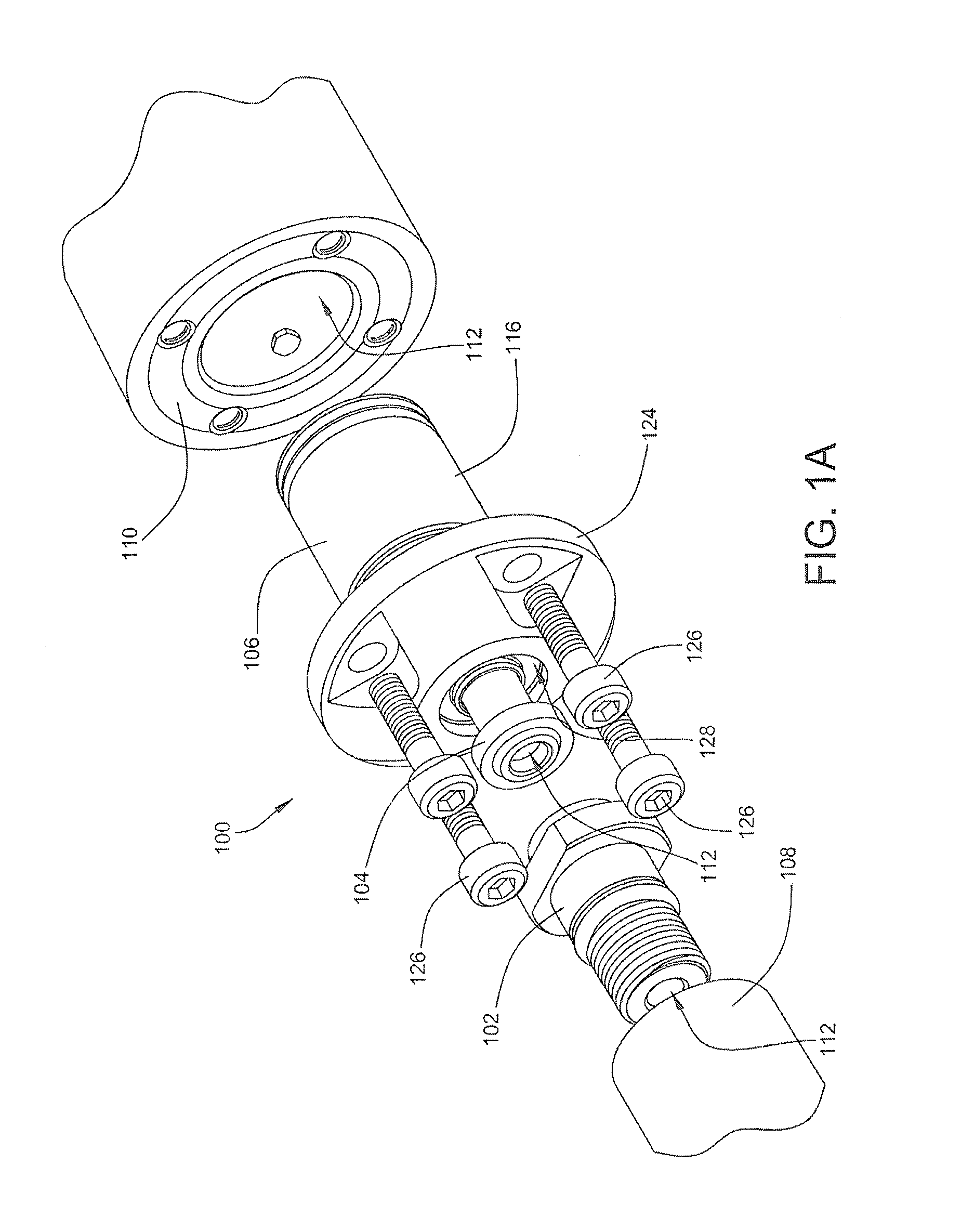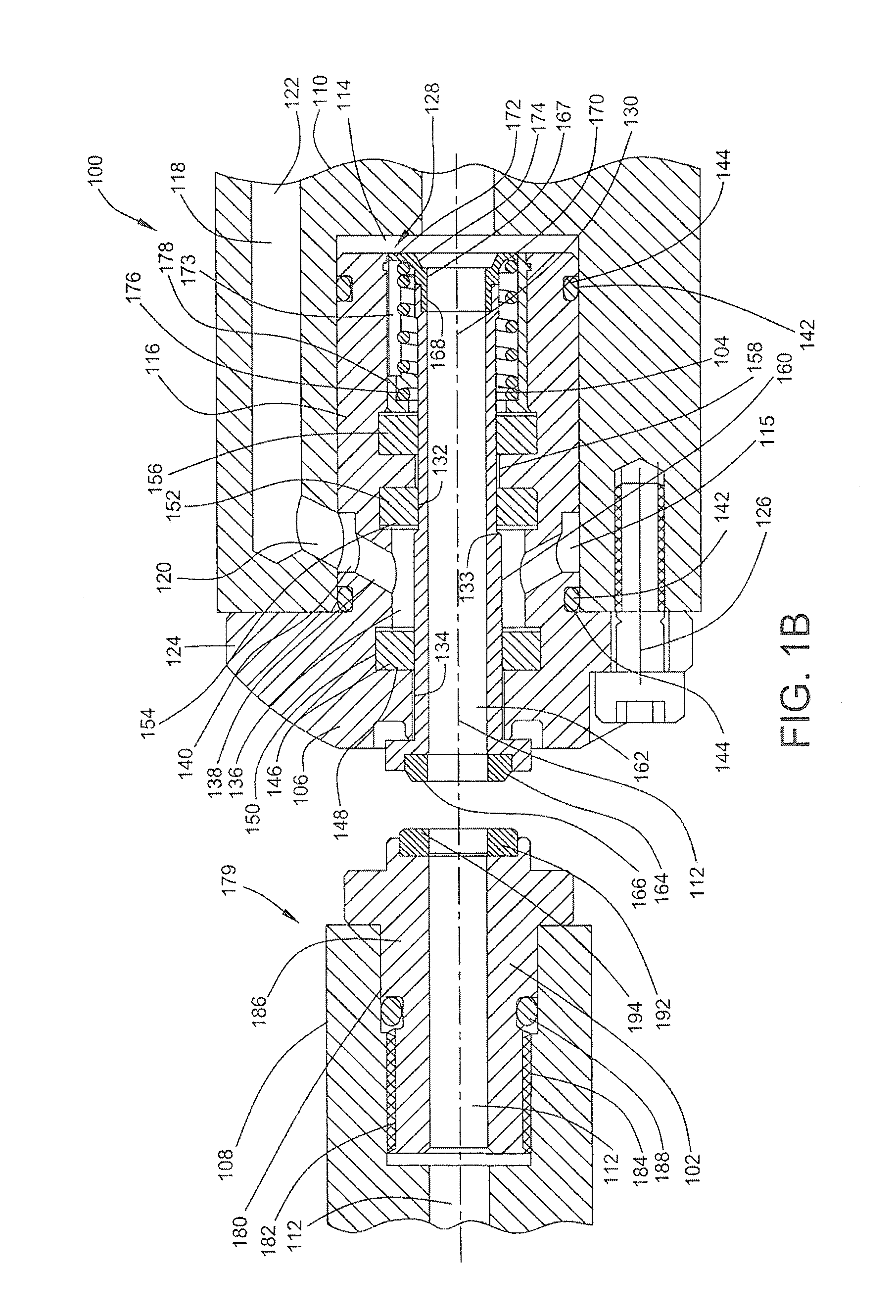Rotary union with selectively controlled seal
a selective control and sealing technology, applied in the direction of fluid pressure control, fluid couplings, instruments, etc., can solve the problems of high media pressure, high flow rate, high cost and/or difficult repair or replacement of precision components, and components that are often subject to corrosive environments or damage, so as to prevent undesired media leakage and reduce seal life
- Summary
- Abstract
- Description
- Claims
- Application Information
AI Technical Summary
Benefits of technology
Problems solved by technology
Method used
Image
Examples
Embodiment Construction
[0023]In the drawings, which form a part of this specification, FIG. 1A is an exploded isometric view of one embodiment of a rotary union 100. The rotary union 100 includes a rotating seal member 102 and a non-rotating seal member 104 that is axially moveable relative to a housing 106. The rotating seal member 102 is associated with a rotating machine component 108, and the housing 106 is associated with a non-rotating machine component 110. A segmented conduit or media channel 112 extends through the non-rotating machine component 110, the rotating and non-rotating seal members 102 and 104 respectively, and the rotating machine component 108 as is best illustrated in FIG. 1B, which is a cross section through the rotary union 100.
[0024]As shown in FIG. 1B, portions of the media channel 112 are defined in different components of the rotary union 100 to provide a fluid passageway through the rotating and non-rotating machine components 108 and 110 when the rotating and non-rotating se...
PUM
 Login to View More
Login to View More Abstract
Description
Claims
Application Information
 Login to View More
Login to View More - Generate Ideas
- Intellectual Property
- Life Sciences
- Materials
- Tech Scout
- Unparalleled Data Quality
- Higher Quality Content
- 60% Fewer Hallucinations
Browse by: Latest US Patents, China's latest patents, Technical Efficacy Thesaurus, Application Domain, Technology Topic, Popular Technical Reports.
© 2025 PatSnap. All rights reserved.Legal|Privacy policy|Modern Slavery Act Transparency Statement|Sitemap|About US| Contact US: help@patsnap.com



